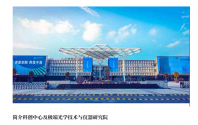D
Deleted member 24525
Guest
Slightly off topic, but does anyone know how Huawei has been able to maintain their base station business after being cut off from tsmc? As of 2020 their base station chips were at 7nm, and as of last year so were those of xiaomi and zte, both of which are buying from tsmc. It's possible Huawei is being supplied by smic but I'm skeptical they have the spare capacity. I've seen rumors that they're making due with advanced packaging but nothing concrete.
Mainly I'm just concerned about China's vulnerability to cutoff from 5g base station chips, since that would have pretty immediate implications for the development of smart manufacturing. This is something I've been concerned about for a while, but I haven't been able to find any meaningful details on how feasible it is to use older nodes for that purpose or how intense the power consumption drawbacks are from doing so. How Huawei has adapted may help answer that.
Mainly I'm just concerned about China's vulnerability to cutoff from 5g base station chips, since that would have pretty immediate implications for the development of smart manufacturing. This is something I've been concerned about for a while, but I haven't been able to find any meaningful details on how feasible it is to use older nodes for that purpose or how intense the power consumption drawbacks are from doing so. How Huawei has adapted may help answer that.

